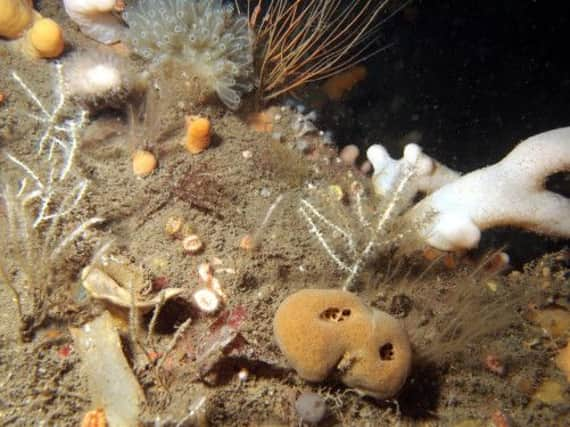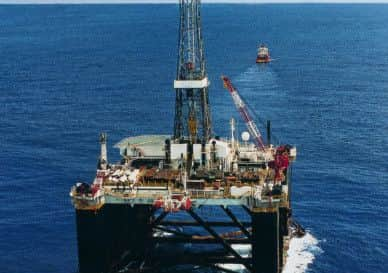North Sea drilling changing behavior of sea life


A team of researchers from the Scottish Oceans Institute at St Andrews University, the University of La Laguna in the Canary Islands and Auckland University in New Zealand, has uncovered new evidence that marine invertebrates, such as scallops and other shellfish, suffer significant body malformations after being exposed to noise.
The team conducted a series of sound playback experiments on New Zealand scallop larvae, comparing their development to a control group kept in quiet conditions.
Advertisement
Hide AdAdvertisement
Hide AdA spokeswoman for St Andrews University explained: “The results show that the exposed scallops suffered significant development delays, with 46 per cent of them developing body abnormalities, while no malformations were found in the controlled larvae.


“The strong impacts observed in the experiment suggest that abnormalities and growth delays could also occur at lower noise levels in the wild, suggesting routine underwater sounds from oil exploration and construction could affect the survival of wild scallops.”
Dr Aguilar de Soto, the research team leader, said: “Nobody knew that noise exposure could affect the growth of animals so dramatically so it was a real surprise to discover malformations in these microscopic larvae. What is actually going wrong inside the cells is still a mystery that we need to investigate. Shellfish larvae go through radical body changes as they grow and noise seems to disrupt this natural process.”
He continued: “Fishermen worldwide complain about reductions in captures follow seismic surveys used for oil explorations. Our results suggest that noise could be one factor explaining delayed effects on stocks.”
Impact
Dr Mark Johnson, a senior research fellow in marine science at St Andrews, said: “Between shipping, construction and oil explorations, we are making more and more noise in the oceans. There is already concern about the possible effects of this on whales and dolphins. Our results show that even small animals could be affected by noise. It is important to find out what noise levels are safe for shellfish to help reduce our impact on these key links in the food chain.”
The report on the study, published today in the Nature Publishing Group journal, Scientific Reports, states: “There is growing concern about the impact that noise from human activities may be having on marine fauna. However, we are still far from understanding how noise affects marine animals either at the individual or population levels.
“High noise levels have been reported to damage the auditory system of fish and cephalopods and cause hearing loss in dolphins. In the wild, geophysical seismic surveys have been singled out as the cause for mass strandings of giant squid with extensive tissue damages while navy sonar have been implicated in the mass strandings of some whale species.”
It continues: “Even though the mechanisms remain cloudy, incidental noise exposure may be already impacting important food resources. Fishermen worldwide complain that seismic surveys produce economic loses by reducing captures of a wide range of commercial species. Their concerns include potential delayed effects in species abundance if noise affects reproductive or developmental stages.”
Advertisement
Hide AdAdvertisement
Hide AdThe test conduced in a tank showed that exposure to low frequency sounds like those produced by seismic surveys disrupted the larval development of the New Zealand scallop.
The report states: “The results were not subtle: high proportions of malformed larvae were found in all four containers exposed to noise while no malformations were found in the four control flasks. The experiment provides a robust indication of the potential consequences of high level sound exposure during larval development.
“This is, to our knowledge, the first evidence that sound can cause growth abnormalities in larvae. The abnormalities observed here are comparable to those caused by chemical pollutants or water acidification, which have a clear impact on larval survival. We therefore conclude that if larvae in the wild are subject to intense noise exposure during development, this could reduce recruitment and so have a delayed impact on stocks of mature animals.”